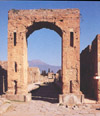
PAESTUM & BUFFALO MOZZARELLA TOUR FOR DISABLED
Details
DURATION: | 6/7 hours |
PRICE: | According to the number of participants |
AVAILABILITY: | All-year-round |
|
Private English-speaking driver & Accessible air-conditioned Mercedes (or similar make) at Your disposal for 7 hours. Private English-speaking guide at Your disposal for 2 hours in the Paestum archaeological area and in the Paestum Museum Paestum Entrance Fees are included We reserve Your tickets in advance: so, You don’t have to stay in the line for entering. |
Itinerary Details are listed below:
TOUR SCHEDULE OF PAESTUM TEMPLES & BUFFALO MOZZARELLA TOUR
|
| Meet with Your private English-speaking driver and his accessible Mercedes car (with air conditioning) by Your accommodation /cruiseship in Sorrento or Naples |
| Transfer to Paestum Archaeological Area |
| Two-hour-tour of Paestum Temples and Museum with a private archaeological English-speaking guide (only for You) |
| Stop (1 hour of free time) in a dairy along the way to taste Italian Buffalo Mozzarella (not included in the price) |
| Back to Your accommodation/cruiseship in Sorrento or Naples |
PAESTUM:
One of the enduring images of southern Italy is that of three Greek temples standing in fields of wild red poppies. The trio are among the best-preserved monuments of Magna Grecia, as the Greeks called their colonies in southern Italy and Sicily. Paestum, or Poseidonia as the city was originally called (in honour of Poseidon, the Greek god of the sea), was founded in the 6th century BC by Greek settlers and fell under Roman control in 273 BC, becoming an important trading port. The town was hit by the successive blows of the retreat of the Roman Empire, savage raids by the Saracens, and was gradually abandoned. Its temples were rediscovered in the late 18th century by road-builders. At the ruins, the first temple you meet on entering the northern end is the 6th-century BC Tempio di Cerere. Smallest of the three temples, it served for a time as a Christian church. Then there is the Tempio di Nettuno dating from about 450 BC, is the largest and best preserved of the three temples. Almost next door, the so called Basilica is Paestum's oldest surviving monument. In its time the city was ringed by an impressive 4.7km of walls, subsequently built and rebuilt by both Lucanians and Romans. The most intact section is south of the ruins themselves.
PAESTUM MUSEUM:
This well-appointed museum just east of the site, houses a collection of much weathered metopes (bas-relief friezes), including 33 of the original 36 from Temple of Argive Hera, 9 km north of Paestum, of which virtually nothing else remains. The Diver’s Tomb is an extraordinary example of painting from the first half of the V century B.C. In fact, it is likely that the Paestum composition emulated older Etruscan designs, undermining the now outdated art historical judgement that Etruscan art was merely derivative and that Etruscan artists never set the standard for Greek artists.
MOZZARELLA DI BUFALA:
Unlike cow’s milk, buffalo’s milk has no carotene; so the cheese it yields is whiter. It also has almost twice the fat of cow’s milk, which produces a creamier cheese, and its flavor is more pronounced, a little gamier. To make Mozzarella di Bufala, the fresh milk is cultured with whey from the previous day’s production and coagulated with rennet. After the curds form, they are allowed to ripen for several hours in their whey, then they are transferred to boiling water and heated until they are stretchable. Workers reach into the hot water and deftly mold the malleable curd into balls. The sooner it is eaten after that, the better. The residents around Naples pride themselves on their access to still-warm Mozzarella and say that by the time it gets to Rome, it is too old. With our Tour, you'll have the chance to visit a dairy along the way and taste the true Mozzarella di Bufala
At the end of the Tour, back to Your accommodation/cruiseship in Sorrento or Naples with our driver.





